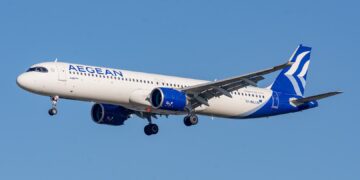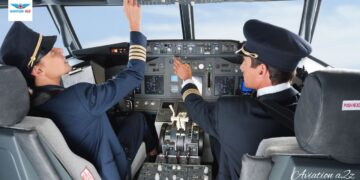On April 1, 2022, a routine service test for an Emirates Airbus A380 aircraft yielded an unexpected outcome.
The plane, with the registration A6-CJE, was put into storage for two years before being reactivated by the UAE’s flag airline.
The test was successful, according to a corporate source, with the jet achieving its maximum speed at cruising altitude as intended.

However, after the test, the plane went into a short dip and began to accelerate, eventually breaking the sound barrier at a height of 10,000 metres (33,000 feet).
“It’s theoretically possible”
- Subsonic commercial jets have previously broken the sound barrier in a dive.
- The most famous incident occurred in 1961, when a Douglas DC-8 dived at Mach 1.012 for 16 seconds.
- However, because the DC-8’s engines were far weaker than the A380’s, it couldn’t maintain such speeds for long periods of time or in level flight.
Possible Commercial use – Emirates
According to a spokeswoman, the A380’s inadvertent supersonic flight occurred during the test, but the results were inconclusive in terms of getting the plane to fly supersonic on commercial flights.
“The A380 is the world’s most prestigious aircraft.”
For us, supersonic operations would be a coup.
The April 1st test was highly encouraging, but we must proceed with caution.
“We need to undertake a lot more testing before we know how viable it is,” an Emirates representative responded.

Not the first time
According to another General Electric engineer, who works under Bibleros and expressed a desire to remain anonymous, there have been earlier reports of Airbus A380 prototypes reaching high supersonic speeds.
Reportedly, the tests were performed between 1975 and 1998 under the special supervision of the United Kingdom Secret Intelligence Service (commonly known as MI6) at the Royal Air Force (RAF) base Luton (LTN), and involved a prototype of the Airbus A380, then known as the A3XX.
Stay Tuned with Aviation a2z!



































